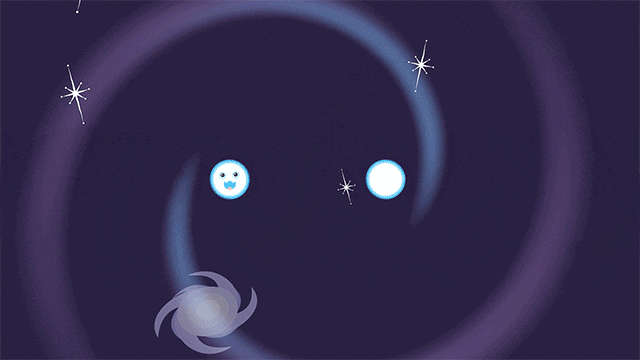When you delve into the world of astrology, one of the first concepts you encounter is the natal chart, also known as a birth chart. This intricate map of the heavens at the exact moment of your birth serves as a unique blueprint of your personality, potential, and life path. Each natal chart is as distinctive as a fingerprint, shaped by the positions of celestial bodies like the Sun, Moon, and planets in relation to Earth.
By understanding your natal chart, you can gain profound insights into your strengths, weaknesses, and the various influences that shape your life experiences. To interpret a natal chart effectively, you must first familiarize yourself with its components. The chart is divided into twelve houses, each representing different areas of life, such as relationships, career, and personal growth.
The signs of the zodiac, which are divided into elements and modalities, play a crucial role in defining how these influences manifest in your life. By analyzing the interplay between these elements and houses, you can uncover deeper layers of meaning that reveal not only who you are but also how you relate to the world around you.
Key Takeaways
- Natal charts are a snapshot of the sky at the moment of a person’s birth, providing insight into their personality, strengths, and challenges.
- Elements (fire, earth, air, water) and modalities (cardinal, fixed, mutable) in natal charts offer further understanding of a person’s traits and behaviors.
- The Sun sign represents the core of a person’s identity, the Moon sign reflects their emotions and instincts, and the Rising sign indicates how they present themselves to the world.
- Compatibility in natal charts can be found by comparing the elements, modalities, and placements of the Sun, Moon, and Rising signs between two individuals.
- Aspects and houses in natal charts reveal how different planetary energies interact and manifest in different areas of life, offering deeper insight into compatibility and challenges.
Elements and Modalities in Natal Charts
In astrology, the elements—fire, earth, air, and water—are fundamental building blocks that shape your personality and behavior. Each element embodies specific traits and characteristics. For instance, if you have a predominance of fire signs in your chart, you may be passionate, energetic, and enthusiastic.
Conversely, an abundance of earth signs might indicate a practical, grounded approach to life. Understanding these elements can help you recognize your inherent tendencies and how they influence your interactions with others. Modalities further refine these elemental characteristics by categorizing signs into three groups: cardinal, fixed, and mutable.
Cardinal signs are initiators; they are often seen as leaders who take charge and drive change. Fixed signs are known for their stability and determination, while mutable signs are adaptable and flexible. By examining both the elements and modalities present in your natal chart, you can gain a clearer picture of how you approach challenges and opportunities in your life.
This understanding can be particularly beneficial when navigating relationships or career paths.
The Importance of Sun, Moon, and Rising Signs

Among the various components of a natal chart, the Sun, Moon, and rising sign—also known as the Ascendant—are often considered the “big three.” Each of these celestial bodies represents different facets of your identity. The Sun sign reflects your core essence and ego; it embodies your conscious self and the traits you aspire to express. Your Moon sign, on the other hand, delves into your emotional landscape and subconscious motivations.
It reveals how you process feelings and respond to emotional situations. The rising sign is equally significant as it represents the persona you project to the world. It influences first impressions and how others perceive you.
Understanding the interplay between these three signs can provide a comprehensive view of your personality. For example, if your Sun is in Leo but your Moon is in Pisces, you may exhibit a confident exterior while harboring deep emotional sensitivity beneath the surface. Recognizing these nuances can enhance your self-awareness and improve your interactions with others.
Finding Compatibility in Natal Charts
| Aspect | Meaning |
|---|---|
| Sun Sign Compatibility | How well the Sun signs of two individuals align and interact |
| Moon Sign Compatibility | How well the emotional needs and responses of two individuals align |
| Rising Sign Compatibility | How well the outward personalities and first impressions of two individuals align |
| Venus and Mars Compatibility | How well the romantic and sexual energies of two individuals align |
When it comes to relationships, compatibility is a key consideration for many individuals seeking deeper connections. Analyzing natal charts can provide valuable insights into how two people may interact based on their astrological placements. By comparing the elements and modalities present in both charts, you can identify areas of harmony as well as potential challenges.
For instance, if one partner has a strong fire influence while the other leans towards earth, there may be a dynamic interplay between passion and practicality that can either complement or clash. Moreover, examining the aspects between planets in both charts can reveal how energies interact. Positive aspects may indicate ease and understanding between partners, while challenging aspects could highlight areas requiring more effort and communication.
By exploring these dynamics, you can gain a clearer understanding of how to navigate your relationship effectively. Compatibility is not solely about finding similar signs; it’s about recognizing how different energies can work together to create a balanced partnership.

If you’re curious how modern astrology can actually help you navigate love, this book is a gem I keep recommending: The Astrology of Love & Sex.
It blends ancient insight with real-world guidance—and trust me, it goes way beyond just sun signs. Think of it as your secret weapon for decoding compatibility.✨
Exploring Aspects and Houses in Natal Charts
Aspects are crucial in understanding how different planets interact within a natal chart. These angles between planets can create harmonious or challenging energies that influence various aspects of your life. For example, a trine aspect indicates ease and flow between two planets, suggesting that their energies work well together.
In contrast, a square aspect may signify tension or conflict that requires conscious effort to resolve. By analyzing these aspects in your natal chart, you can identify areas where you may experience natural strengths or face obstacles. The houses in a natal chart further contextualize these planetary influences by representing specific life areas.
Each house corresponds to different themes such as relationships (7th house), career (10th house), and personal identity (1st house). By examining which planets reside in which houses and their corresponding aspects to other planets, you can gain insights into where your energies are focused and how they manifest in your life experiences. This exploration allows for a more nuanced understanding of yourself and your interactions with others.
Challenges and Opportunities in Natal Chart Compatibility

While exploring compatibility through natal charts can be enlightening, it’s essential to recognize that every relationship will encounter challenges. Differences in elemental composition or conflicting aspects can lead to misunderstandings or friction between partners. For instance, if one partner has a strong emphasis on emotional expression while the other prefers logical reasoning, this disparity may create tension during discussions or decision-making processes.
However, challenges also present opportunities for growth and deeper understanding within relationships. By acknowledging these differences and working through them together, partners can develop stronger communication skills and foster greater empathy for one another’s perspectives. Embracing the complexities of each other’s charts can lead to richer connections and a more profound appreciation for what each person brings to the relationship.
Strategies for Enhancing Natal Chart Compatibility
To enhance compatibility based on natal charts, open communication is paramount. Discussing each other’s astrological influences can foster understanding and compassion for differing viewpoints or emotional responses. For example, if one partner has a fiery temperament while the other is more reserved, acknowledging these differences can help both individuals navigate conflicts with greater sensitivity.
Additionally, consider engaging in activities that align with both partners’ strengths as indicated by their charts. If one partner thrives on adventure while the other prefers stability, finding a balance between spontaneous outings and cozy nights in can create harmony within the relationship. By consciously integrating each other’s preferences into shared experiences, you can cultivate a deeper bond that honors both partners’ unique qualities.
Seeking Professional Help for Natal Chart Compatibility
While self-exploration through natal charts can be incredibly insightful, sometimes seeking professional guidance from an astrologer can provide additional clarity. A skilled astrologer can offer personalized interpretations of both partners’ charts and highlight areas of compatibility or potential challenges that may not be immediately apparent. This expert perspective can help couples navigate their relationship dynamics more effectively.
Moreover, professional astrologers often provide tools and strategies tailored to individual couples based on their unique charts. Whether it’s through synastry (the comparison of two charts) or composite charts (a combined chart representing the relationship), an astrologer can offer valuable insights that empower couples to strengthen their connection. Ultimately, seeking professional help can enhance your understanding of each other’s astrological influences and foster a more harmonious partnership.
In conclusion, understanding natal charts opens up a world of self-discovery and relationship dynamics that can enrich your life experiences. By exploring elements, modalities, aspects, and houses within these charts, you gain valuable insights into yourself and those around you. Whether navigating personal growth or seeking compatibility with others, astrology offers tools for deeper understanding and connection that can lead to fulfilling relationships and personal fulfillment.
Understanding the influence of planetary alignments, such as Jupiter, can also provide valuable insights into astrology. For a deeper dive into Jupiter’s role in astrological mythology, you can read this article next.

If you’re curious how modern astrology can actually help you navigate love, this book is a gem I keep recommending: The Astrology of Love & Sex.
It blends ancient insight with real-world guidance—and trust me, it goes way beyond just sun signs. Think of it as your secret weapon for decoding compatibility.✨
FAQs
What is a natal chart compatibility?
Natal chart compatibility is the comparison of two individuals’ birth charts to determine the potential for a harmonious relationship. It involves analyzing the positions of the planets, signs, and houses in each person’s natal chart to assess how they interact with each other.
How is natal chart compatibility determined?
Natal chart compatibility is determined by comparing the placements of the Sun, Moon, and other planets in each person’s birth chart. Astrologers look at aspects, such as conjunctions, trines, and squares, to assess the potential for compatibility between two individuals.
What are the factors considered in natal chart compatibility?
In natal chart compatibility, astrologers consider the elements (fire, earth, air, water) and qualities (cardinal, fixed, mutable) of each person’s chart, as well as the positions of the Sun, Moon, and other planets. They also look at the aspects formed between the planets in each chart.
Can natal chart compatibility determine the success of a relationship?
Natal chart compatibility can provide insights into the dynamics of a relationship and the potential challenges and strengths. However, it is important to note that compatibility is just one factor in determining the success of a relationship, and other factors such as communication, trust, and shared values also play a significant role.
Is natal chart compatibility scientifically proven?
Astrology, including natal chart compatibility, is not scientifically proven and is considered a pseudoscience by the scientific community. It is based on ancient beliefs and traditions and is not supported by empirical evidence. However, many people find value in astrology for personal insight and self-reflection.

If you’re curious how modern astrology can actually help you navigate love, this book is a gem I keep recommending: The Astrology of Love & Sex.
It blends ancient insight with real-world guidance—and trust me, it goes way beyond just sun signs. Think of it as your secret weapon for decoding compatibility.✨




